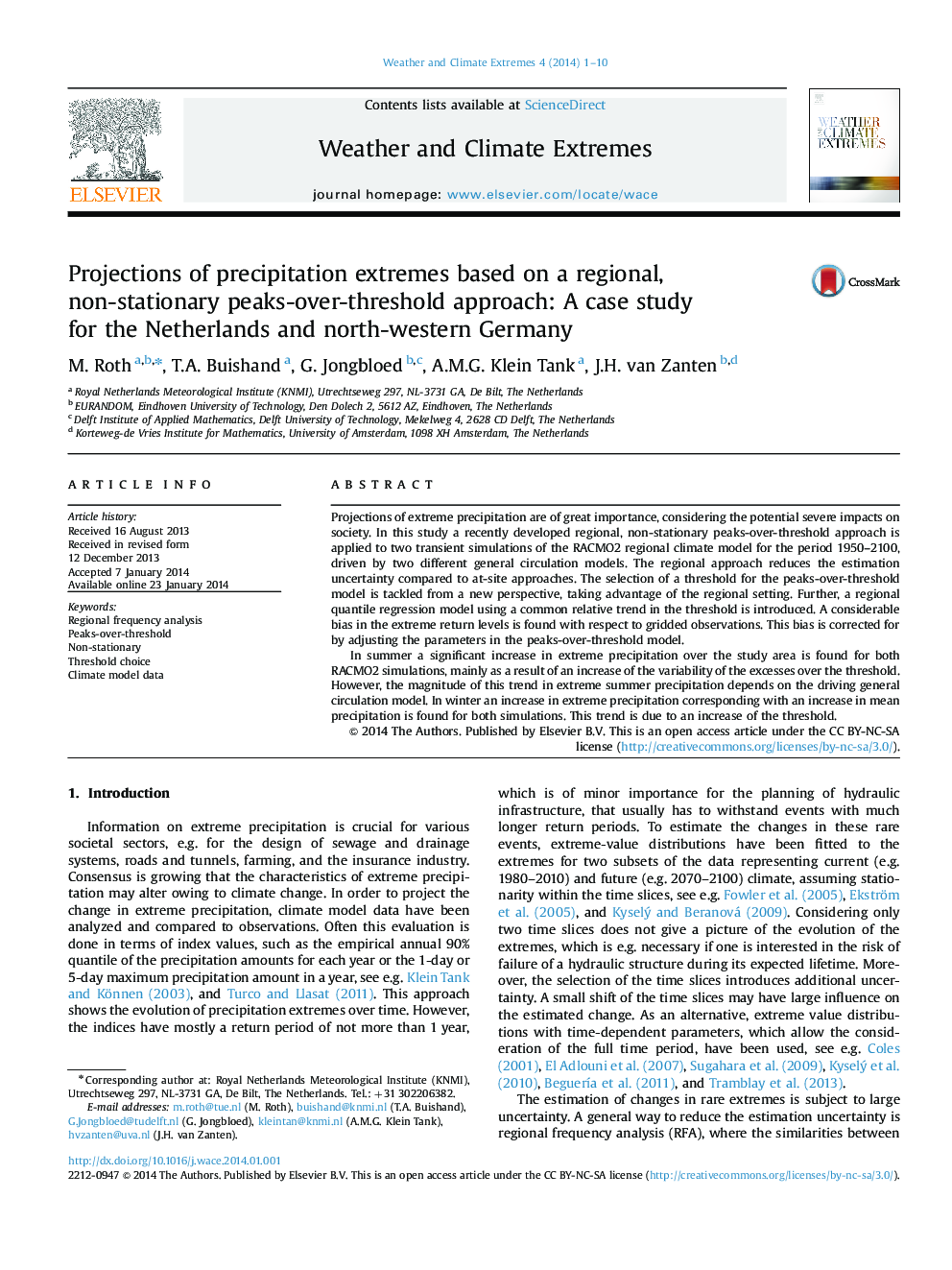| Article ID | Journal | Published Year | Pages | File Type |
|---|---|---|---|---|
| 1066733 | Weather and Climate Extremes | 2014 | 10 Pages |
Projections of extreme precipitation are of great importance, considering the potential severe impacts on society. In this study a recently developed regional, non-stationary peaks-over-threshold approach is applied to two transient simulations of the RACMO2 regional climate model for the period 1950–2100, driven by two different general circulation models. The regional approach reduces the estimation uncertainty compared to at-site approaches. The selection of a threshold for the peaks-over-threshold model is tackled from a new perspective, taking advantage of the regional setting. Further, a regional quantile regression model using a common relative trend in the threshold is introduced. A considerable bias in the extreme return levels is found with respect to gridded observations. This bias is corrected for by adjusting the parameters in the peaks-over-threshold model.In summer a significant increase in extreme precipitation over the study area is found for both RACMO2 simulations, mainly as a result of an increase of the variability of the excesses over the threshold. However, the magnitude of this trend in extreme summer precipitation depends on the driving general circulation model. In winter an increase in extreme precipitation corresponding with an increase in mean precipitation is found for both simulations. This trend is due to an increase of the threshold.
